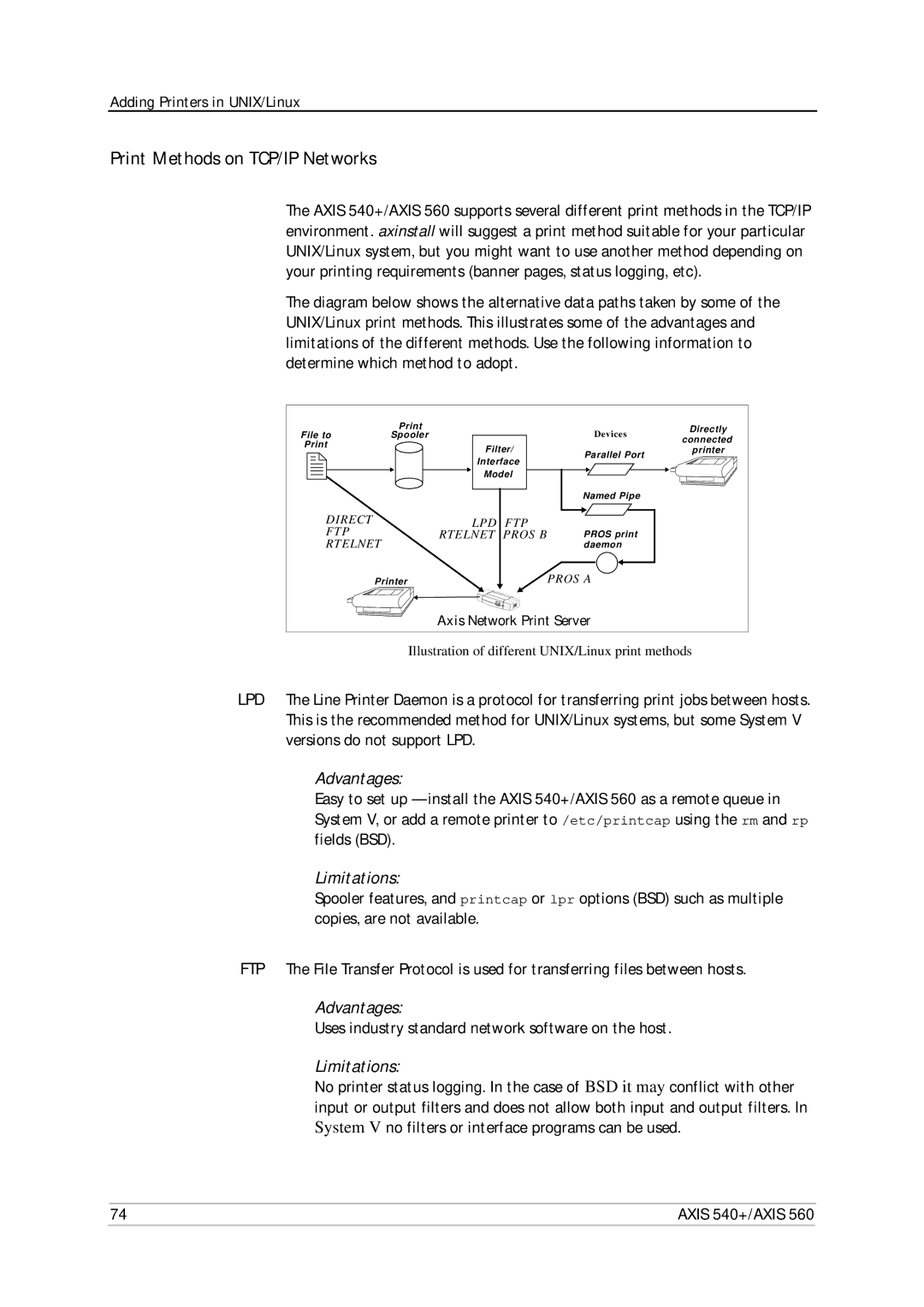
Adding Printers in UNIX/Linux
Print Methods on TCP/IP Networks
The AXIS 540+/AXIS 560 supports several different print methods in the TCP/IP environment. axinstall will suggest a print method suitable for your particular UNIX/Linux system, but you might want to use another method depending on your printing requirements (banner pages, status logging, etc).
The diagram below shows the alternative data paths taken by some of the UNIX/Linux print methods. This illustrates some of the advantages and limitations of the different methods. Use the following information to determine which method to adopt.
File to |
| Devices | Directly | |
Spooler |
| connected | ||
| Filter/ |
| ||
|
| printer | ||
! |
| Parallel Port | ||
| Interface |
| ||
|
|
| ||
| Model |
|
| |
|
|
|
| |
|
|
| Named Pipe |
|
DIRECT |
| LPD FTP |
|
|
FTP |
| RTELNET PROS B | PROS print |
|
RTELNET |
| daemon |
| |
| Printer |
| PROS A |
|
|
| Axis Network Print Server |
| |
Illustration of different UNIX/Linux print methods
LPD The Line Printer Daemon is a protocol for transferring print jobs between hosts. This is the recommended method for UNIX/Linux systems, but some System V versions do not support LPD.
Advantages:
Easy to set up — install the AXIS 540+/AXIS 560 as a remote queue in System V, or add a remote printer to /etc/printcap using the rm and rp fields (BSD).
Limitations:
Spooler features, and printcap or lpr options (BSD) such as multiple copies, are not available.
FTP The File Transfer Protocol is used for transferring files between hosts.
Advantages:
Uses industry standard network software on the host.
Limitations:
No printer status logging. In the case of BSD it may conflict with other input or output filters and does not allow both input and output filters. In System V no filters or interface programs can be used.
74 | AXIS 540+/AXIS 560 |
